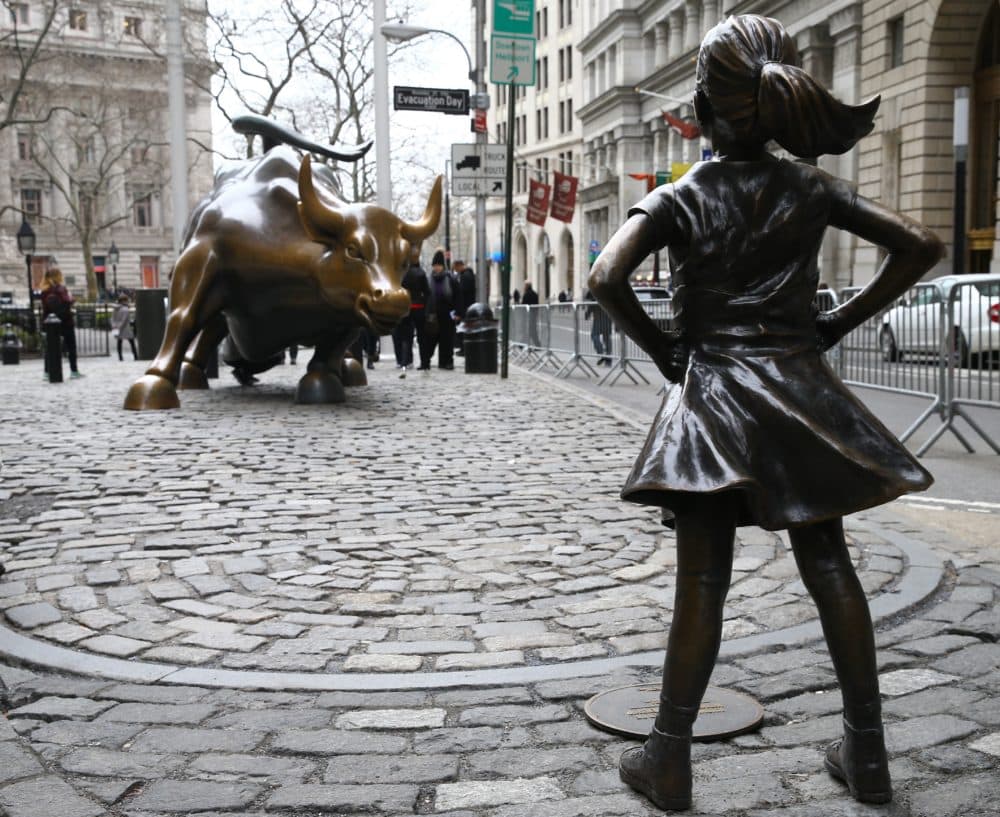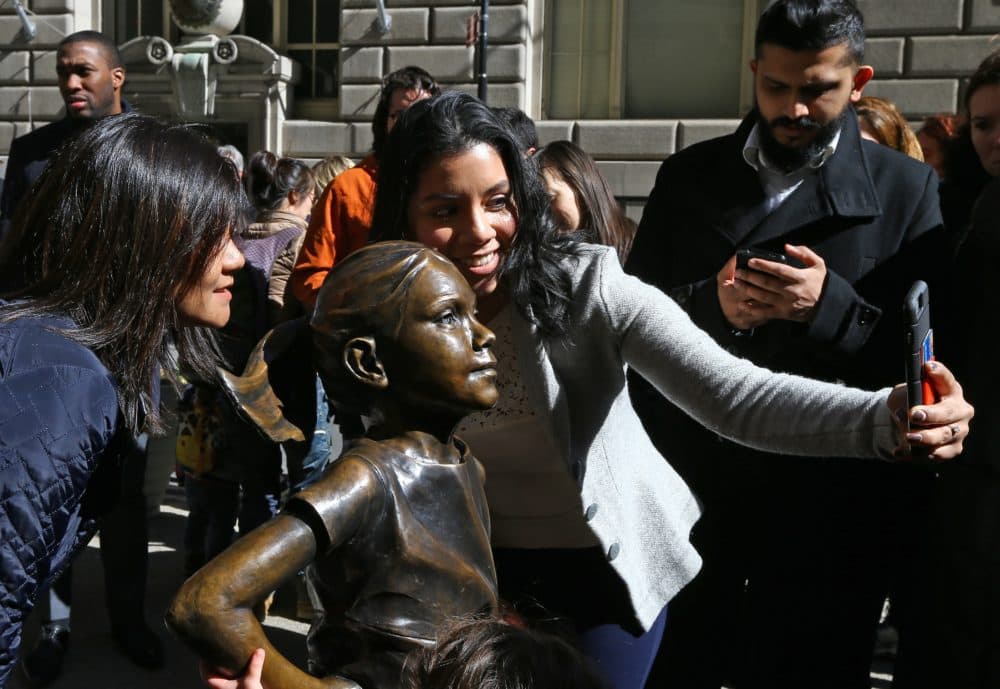Advertisement
The uncertain future of 'Fearless Girl'

Public monuments have become big business. On Monday afternoon, a government commission in New York City will have an unusual debate. Should the Boston-based fund manager, State Street Global Advisors, be able to own and maintain the defiant Fearless Girl as a privately-owned monument on a public street in front of the New York Stock Exchange? After five years of temporary permits, the statue finally must be reviewed by the Public Design Commission, a body of artists and designers that reviews long-term artworks on public property. Rather than accept State Street’s proposal, they should insist on a regularized status under city ownership.
A quasi-permanent public monument owned by a large corporation, trying to sell its branded index fund with the ticker “SHE,” is a new phenomenon. This would create a new class of public art within New York City’s extraordinary collection that includes works by Augustus Saint-Gaudens and Daniel Chester French. The case is bewildering to experts, like Michele Bogart, Professor Emeritus of Art History at Stony Brook, who have called it an “absurdity.”
The success of State Street’s proposal to maintain the work for at least three more years is not assured. The company is spending $45,000 on the lobbyist firm Kasirer LLC to corral testimony at Monday’s hearing and to try to persuade government officials that this is a reasonable arrangement. Their Powerpoint presentation defends the sculpture as worthy of Lower Manhattan and challenges claims that the company has misstated their role in the work’s conception and creation. State Street also argues that the sculpture inspires a noble governance campaign of demanding more women on corporate boards. (The idea of these pure intentions was soured by the discovery that the Department of Labor accused them of discrimination against female employees. Until people started pointing it out and they added DonnaLee DeMaio last month, the parent company State Street still had fewer women on its own board of directors than the 30% they sought from other companies).
Public monuments have become big business.
The artist who sculpted the work and who owns the copyright, Kristen Visbal, is proposing another alternative, and she also plans to speak at the hearing with her own supporters. She wants the city to accept an “artist proof casting” of the sculpture that it can own forever, if State Street is unwilling to donate theirs. She further objects to State Street’s characterization of the meaning of the work, with court filings asserting that she had never heard of State Street when she sculpted it and was under the impression that her work was going to be displayed as part of a rogue campaign for social change on International Women’s Day. She wants the work to serve as an international symbol of women’s equality to be used by nonprofits.
Her anger at State Street is understandable. For the last three years, since the sculpture was moved to the stock exchange, the company has been suing Visbal to make it difficult for her to exercise her copyright and make sales of the work. As communications broke down between Visbal and the company, it became difficult, if not impossible, for the parties to agree on what sales would conflict with a limited trademark that Visbal voluntarily granted the company. State Street argues that this trademark means that her clients can’t have any connection to corporate finance, no matter how tenuous.

For example, State Street sued a law firm in Australia that had installed one of Visbal’s castings in a public square and displayed the logo of another financial firm on a screen at the unveiling. State Street lost the case (along with their appeal), but their globetrotting to halt Visbal’s sales has made it difficult for her to exercise her copyright. Visbal has accumulated nearly $3 million in legal bills fighting the corporate behemoth. Embracing the zeitgeist, she is looking into NFTs to find money to pay her lawyers.
City ownership of the piece would help on the artist rights questions. Visbal would no longer have to rely on a hostile party acting as “her agent” under the official public art regulations, and both parties would then have equal footing to petition on issues like the wording of the official signage that suggests the meaning and mission of the work.
City ownership of the piece would help on the artist rights questions.
This basic position that a private corporation should not have so much enduring power over a public monument is also consistent with custom. Almost every single one of the thousands of public artworks in New York City’s collection is owned by the public. There are many solid reasons — including the practical prerogatives of city agencies, ensuring permanence and continuity, and constraining the commercialization of public space — why public artworks should indeed be public.
Nevertheless, the Public Design Commission is actually quite independent and frequently challenges, or at least tweaks, proposals from City Hall. A favorable and fair decision on Monday could start things afresh. If New York City decides that the indefinite private ownership of this piece is not appropriate, and conditions approval on a new arrangement, State Street might need to step back. They are already closing their offices in New York City and are shifting back to Boston and other cities. They would have to decide if it is worth fighting tooth-and-nail — against the artist, against the city, against the public — all to maintain exclusive control over a symbol that is supposed to represent justice and equality.
Advertisement
On the other hand, if New York City won’t play ball and let State Street run their streets, is it possible that Fearless Girl might come to Boston? To State Street?
About the author: Todd Fine is the president of the Washington Street Advocacy Group, which supports public art and public history in New York City. He is also a PhD candidate in History at the Graduate Center of the City University of New York.